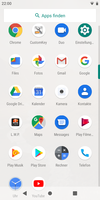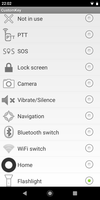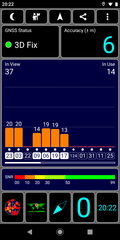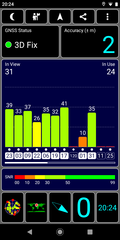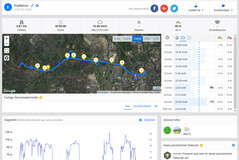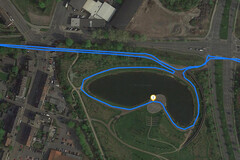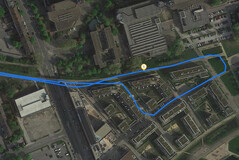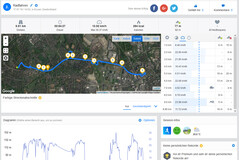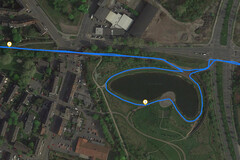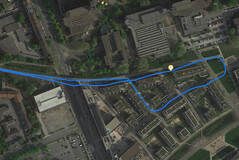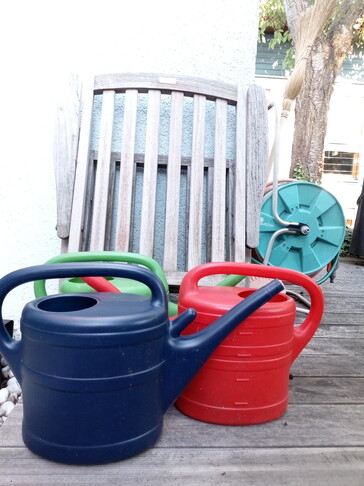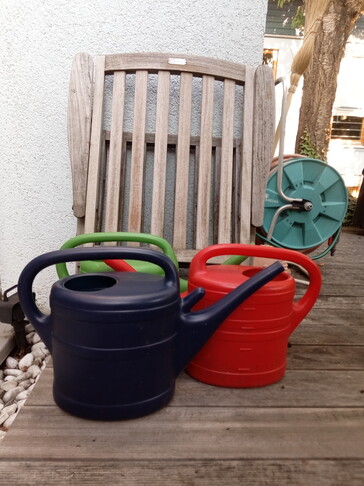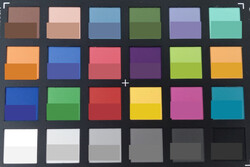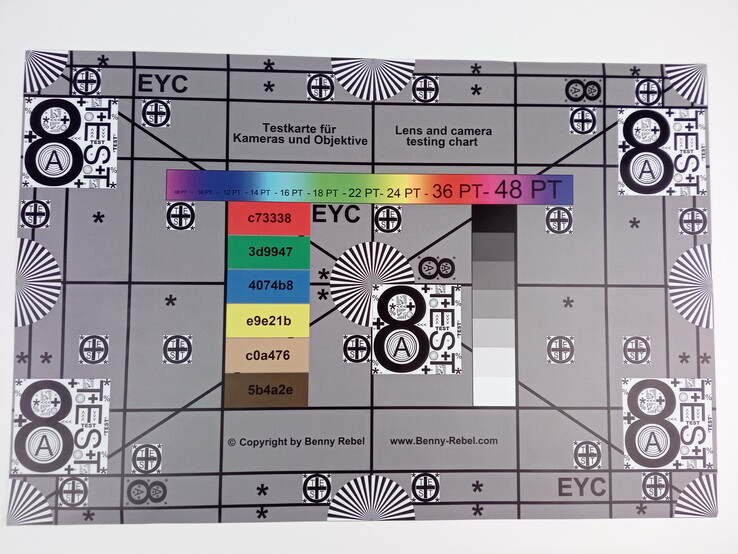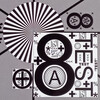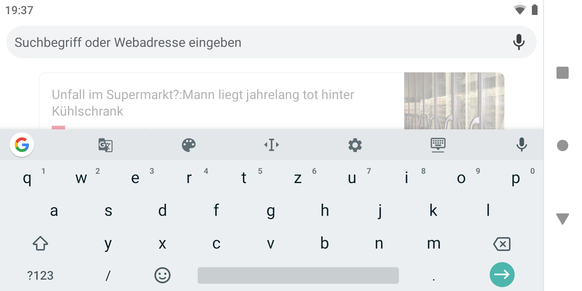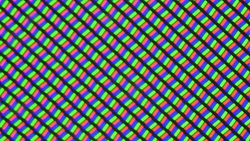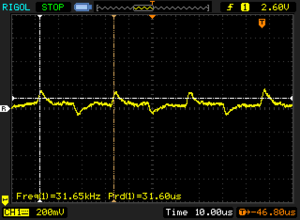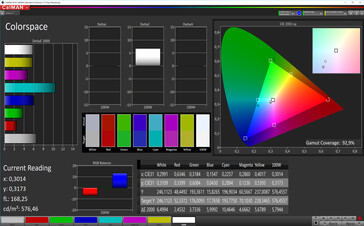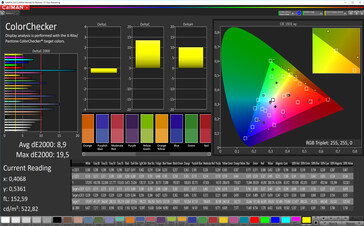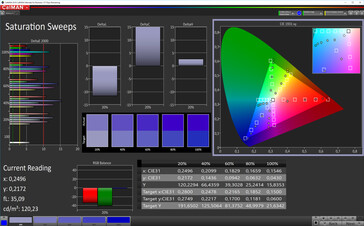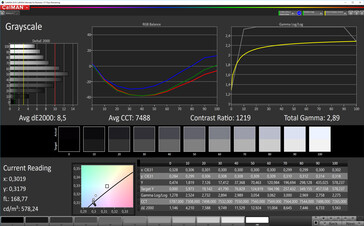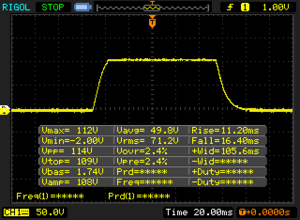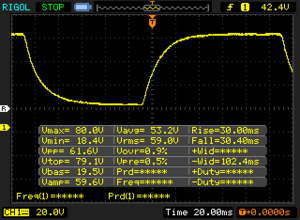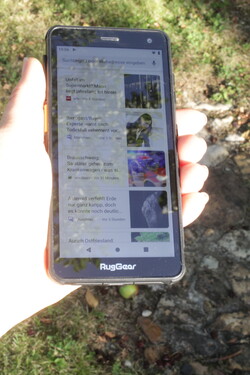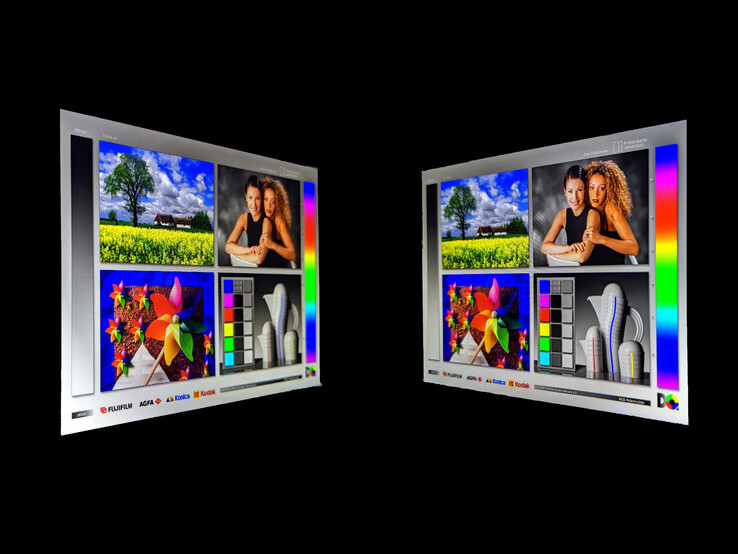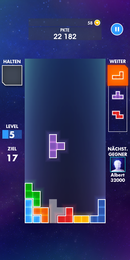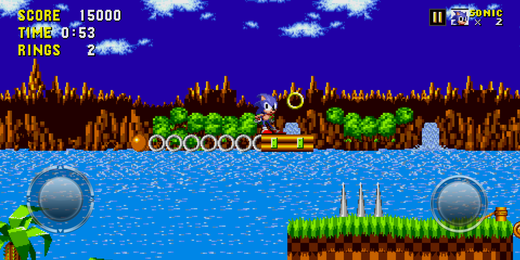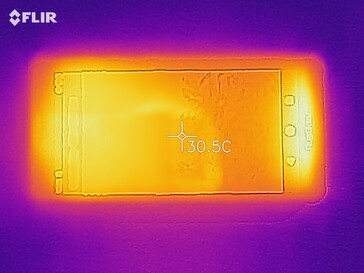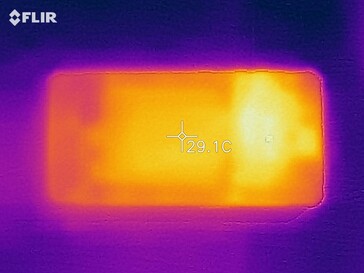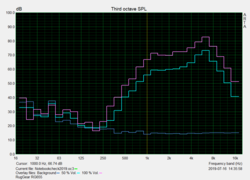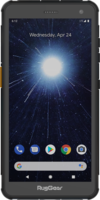RugGear RG655 Smartphone Review: A pleasant outdoor handset with a few useful extras, and shortcomings
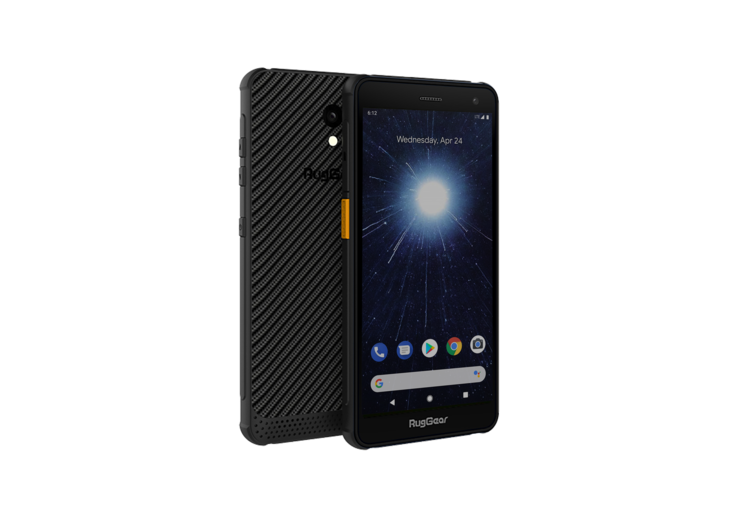
RugGear is hardly known in Europe, but the Shenzhen-based company has been releasing devices for around 12 years now, designing its tablet and smartphones in Lauda-Königshofen, Germany.
RugGear has now expanded its offering beyond just rugged smartphones and tablets, with it also targeting prosumers. We have already reviewed the RG650 and RG850, which both straddled the line between rugged and contemporary smartphone, and now we have the RG655 in for review. The RG655 is not just a slightly altered version of the RG650 though, with RugGear opting for a completely different design and SoC among other changes.
The RG655 currently retails for €270 (~$301), effectively meaning that it fills the gap between RG650 and RG850, which launched at €400 (~$446) and €200 (~$223) respectively. We have also decided to compare the RG655 against the Oukitel WP1, Crosscall Trekker-X4 and Ulefone Armor 6, along with the Samsung Galaxy XCover 4s. All are sold as outdoor smartphones, for reference.
Case
The RG655 does not look much like an outdoor smartphone, with its polycarbonate design reminding us more of a conventional mid-range Android device. Its shimmering back panel looks the part too with its black carbon fibre finish. The RG655 is also comparatively light at 196 g (~6.9 oz), with most of our comparison devices exceeding 200 g (~7.05 oz).
RugGear claims that the device is IP68 and MIL-STD-810G certified too, the former of which means that it is dust-tight and water-resistant at a depth of at least 1 m (~3 ft). MIL-STD-810G compliance means that the RG655 must have successfully passed fourteen environmental and climatic tests. However, no independent organisation or agency certifies MIL-STD-810 compliance, so the conditions under which RugGear tested the device are unclear.
Most ports are protected by covers, although RugGear has left the micro USB port exposed. The card slot can be pulled out without using a SIM tool or a needle, which is practical as it allows you to change your SIM or microSD card on the move. The device has raised corners for added protection too, or at least the illusion of it.
RugGear has placed the power and volume buttons on the right-hand side of the device, but it has also included a fourth button that is configurable via its in-house CustomKey app.
Connectivity
As you may have noticed from the picture at the beginning of this review, the RG655 has no fingerprint scanner. It is unfathomable for a $300 smartphone released in 2019 to lack any form of biometric authentication and is a strange omission in our opinion. We like that the display still responds to wet fingers, or if we are wearing gloves, but it does not make up for the lack of a fingerprint scanner.
RugGear has left out some other sensors too, which we shall cover in the Games section of this review. We were surprised to see a micro USB port too, with most OEMs now having moved onto the more powerful and versatile USB Type-C. We like that RugGear has included microSD card expansion and dual-SIM functionality, although it is a shame to see a hybrid second SIM card slot as this forces people to choose between using a second SIM or a microSD card. Moreover, the card reader does not support exFAT, so it cannot read files that are larger than 4 GB.
The RG655 also comes with a MediaTek Helio P22 MT6762 SoC, 3 GB of RAM and 32 GB of storage. The latter two are rather stingy by today’s standards, but we shall cover what effect these have in the Performance section of this review. Likewise, a 5.5-inch 720p display seems antiquated now, but it is not a bad panel as we will discuss later. The device supports Bluetooth 5.0, NFC, and a decent range of LTE bands.
Software
RugGear has a reputation of realising smartphones with comparatively new software, with the RG850 being one of the first outdoor devices we tested running Android Oreo. The RG655 stays true to this and ships with Android 9.0 Pie. However, our review unit had the March 5 set of security patches installed during our tests in July, which suggests that RugGear may not be forthcoming on updates.
On the positive side, the RG655 comes with hardly any bloatware save for a few in-house apps and the standard suite of Google services. The main RugGear app is CustomKey, which controls the orange user-configurable button. The app allows you to trigger the flashlight, push-to-talk (PTT) functionality, camera and SoS, among others. You can trigger an emergency call via the Lone Worker Protection (LWP) system too, but you must first install an appropriate service on the device before this will work.
Communication & GPS
The RG655 does not have a MIMO antenna and so only averages just less than 300 Mbit/s in our iperf3 Client Wi-Fi tests with our Linksys EA 8500 reference router. The RugGear is in good company here though, finishing second to the Armor 6 and Trekker-X4 in our comparison tables.
The RG655 supports 11 LTE bands and UMTS bands 1, 5 and 8. Overall, you should have no issues with using the device on intercontinental trips.
The RG655 uses BeiDou, GLONASS and GPS for location services, which allow it to find a satellite fix with up to 2 metres (~6.6 ft) accuracy outdoors and 6 metres (~20 ft) indoors. These are incredibly precise values by smartphone standards, with our review unit even able to detect us changing rooms. In short, the RG655 has a fantastic GPS module.
We also took the RG655 on a bike ride to test its location accuracy against the Garmin Edge 500, our reference bike computer. The two devices plotted almost the same route, with the RG655 claiming that we had cycled 40 metres (~44 yd) further than the Garmin did. Overall, the RG655 impressed us during this test, although its accuracy did fall just short of our bike computer in some instances, as demonstrated by the “Loop” screenshots below. You should have no issues with using the RG655 for all general navigation tasks though.
Telephone Features and Call Quality
RugGear pre-installs the standard suite of Google telephony apps, which work just as well as they do on other devices that we have tested. Our review unit has decent call quality, but we occasionally noticed some background hiss during our test calls.
Positively, the RG655 supports Wi-Fi calls (VoWiFi) and voice-over-LTE (VoLTE). Your carrier must provision the device before either technology will work though; they will not work out of the box, even if you can enable them in Settings.
Cameras
RugGear has equipped the RG655 with two cameras, an 8 MP front-facing sensor and a 13 MP rear-facing one. The former has a fixed focus and is good enough for the occasional selfie. The default camera app includes a beauty mode where you can smooth your skin, enlarge your eyes or slim your face. The app also has a pro mode where you can change the lighting among other adjustments.
The rear-facing camera is almost useless in low light, as scene 4 below shows. By contrast, a strong lilac tint dominates daylight photos, which we have tried our best to capture in the comparison photos below. Overall, colours look washed out compared to photos shot with our comparison devices. Our test shots are not particularly sharp either.
There is a pro mode for the rear-facing camera too, which reveals that software algorithms and post-processing are partly to blame for the lilac tint and washed out colours. Manually adjusting the ISO and white balance resulted in a noticeably better photo, which not only is more colour accurate but also looks more detailed. In short, we would recommend using the pro mode where possible as the difference it makes is dramatic, as the photos below demonstrate.
We also subjected our review unit to further camera tests under controlled lighting conditions. The rear-facing sensor generally washes out colours compared to the ColorChecker Passport reference colours, although it gets magenta almost bang on. Accordingly, the higher the percentage of magenta in a colour, the more accurately the camera can reproduce it.
Our review unit does not do a great job at capturing our test chart either, with black text looking frayed against coloured backgrounds. The chart looks sharp at the centre of the image, but contrast levels drop off drastically towards the outer edges of the chart. Predictably, the chart is almost unrecognisable in our low-light shot.
Accessories & Warranty
The RG655 comes with a charger, a micro USB to USB Type-A cable and a quick-start guide. RugGear does not currently sell any RG655-specific accessories.
The device also comes with a 24-month limited manufacturer’s warranty. Please see our Guarantees, Return Policies & Warranties FAQ for country-specific information.
Input Devices & Operation
The RG655 has a five-point multitouch touchscreen. By contrast, most modern smartphones support ten-point multitouch, making the touchscreen in the RG655 comparatively outdated. RugGear pre-installs Google Gboard as the default keyboard, which worked well during our tests.
We also experienced no issues with the touchscreen or hardware buttons. The RG655 uses capacitive navigation buttons as most modern Android smartphones do.
Display
RugGear has equipped the RG655 with a 5.5-inch IPS display that gets impressively bright. X-Rite i1Pro 2 recorded an average maximum luminosity of 579 cd/m² and an 88% evenly lit backlight. In short, the RG655 gets between 7% and 39% brighter than our comparison devices.
The automatic brightness control responds quickly to changing lighting conditions too, sometimes dimming the display to below 10% brightness indoors. The panel can only reach a minimum of 21.34 cd/m² though, so 10% brightness is still rather bright.
Our tests demonstrated that the display flickers when set to 15% brightness and below though, which may be an issue to some people. Pulse-width modulation (PWM) can cause health issues, but the display flickers at 31,650 Hz, which should be higher enough not to affect most people and potentially even those who are PWM sensitive.
An 18:9 aspect ratio is not ideal for watching movies or videos, with content shot in 16:9 being flanked by black borders. The device is only Widevine Level 1 certified, meaning that it can only stream DRM protected content from services like Amazon Prime Video and Netflix in standard definition, rather than in HD.
| |||||||||||||||||||||||||
Brightness Distribution: 88 %
Center on Battery: 593 cd/m²
Contrast: 1289:1 (Black: 0.46 cd/m²)
ΔE Color 8.9 | 0.5-29.43 Ø5
ΔE Greyscale 8.5 | 0.57-98 Ø5.3
92.9% sRGB (Calman 2D)
Gamma: 2.89
| RugGear RG655 IPS, 1440x720, 5.50 | Crosscall Trekker-X4 IPS, 1920x1080, 5.50 | Oukitel WP1 IPS, 1440x720, 5.45 | RugGear RG850 IPS, 1440x720, 5.99 | Samsung Galaxy XCover 4s IPS (PLS), 1280x720, 5.00 | Ulefone Armor 6 IPS LCD, 2246x1080, 6.20 | |
|---|---|---|---|---|---|---|
| Screen | -5% | -5% | -26% | 4% | 30% | |
| Brightness middle | 593 | 374 -37% | 561 -5% | 444 -25% | 525 -11% | 418 -30% |
| Brightness | 579 | 352 -39% | 537 -7% | 469 -19% | 513 -11% | 413 -29% |
| Brightness Distribution | 88 | 86 -2% | 84 -5% | 88 0% | 90 2% | 91 3% |
| Black Level * | 0.46 | 0.35 24% | 0.85 -85% | 0.62 -35% | 0.52 -13% | 0.2 57% |
| Contrast | 1289 | 1069 -17% | 660 -49% | 716 -44% | 1010 -22% | 2090 62% |
| Colorchecker dE 2000 * | 8.9 | 7.46 16% | 5.4 39% | 9.75 -10% | 6 33% | 4.5 49% |
| Colorchecker dE 2000 max. * | 19.5 | 13.27 32% | 11.8 39% | 22.4 -15% | 10.9 44% | 6.8 65% |
| Greyscale dE 2000 * | 8.5 | 9.8 -15% | 5.8 32% | 13.5 -59% | 7.8 8% | 3.3 61% |
| Gamma | 2.89 76% | 2.152 102% | 2.37 93% | 2.736 80% | 2.53 87% | 2.24 98% |
| CCT | 7488 87% | 10554 62% | 7567 86% | 9287 70% | 8605 76% | 7205 90% |
* ... smaller is better
Screen Flickering / PWM (Pulse-Width Modulation)
| Screen flickering / PWM detected | 31650 Hz | ≤ 15 % brightness setting | |
The display backlight flickers at 31650 Hz (worst case, e.g., utilizing PWM) Flickering detected at a brightness setting of 15 % and below. There should be no flickering or PWM above this brightness setting. The frequency of 31650 Hz is quite high, so most users sensitive to PWM should not notice any flickering. In comparison: 53 % of all tested devices do not use PWM to dim the display. If PWM was detected, an average of 17903 (minimum: 5 - maximum: 3846000) Hz was measured. | |||
The RG655 has a 0.46 cd/m² black value according to X-Rite i1Pro 2, which is acceptable for an outdoor smartphone, although APL measures it at 0.58 cd/m². This is lower than all but the Trekker-X4 and Armor 6 of our comparison devices, but only the latter has a higher contrast ratio than the RG655.
Tests with our spectrophotometer and CalMAN analysis software determine that the display has high DeltaE colour deviations, but all our comparison devices do too. We also noticed a slight colour cast during our tests. The two combine to yield a colour temperature of 7,488 K, which generally makes colours look overly cold. Incidentally, this is about 1,000 K above the ideal value of 6,500 K.
Display Response Times
| ↔ Response Time Black to White | ||
|---|---|---|
| 27.6 ms ... rise ↗ and fall ↘ combined | ↗ 11.2 ms rise | |
| ↘ 16.4 ms fall | ||
| The screen shows relatively slow response rates in our tests and may be too slow for gamers. In comparison, all tested devices range from 0.1 (minimum) to 240 (maximum) ms. » 66 % of all devices are better. This means that the measured response time is worse than the average of all tested devices (21.5 ms). | ||
| ↔ Response Time 50% Grey to 80% Grey | ||
| 60.4 ms ... rise ↗ and fall ↘ combined | ↗ 30 ms rise | |
| ↘ 30.4 ms fall | ||
| The screen shows slow response rates in our tests and will be unsatisfactory for gamers. In comparison, all tested devices range from 0.2 (minimum) to 636 (maximum) ms. » 96 % of all devices are better. This means that the measured response time is worse than the average of all tested devices (33.7 ms). | ||
The RG655 is easy to use outdoors thanks to its bright IPS panel. The display still picks up reflections, but its high maximum luminosity offsets these well.
We also liked that the display responds to wet fingers and gloves. The device will probably not recognise fingers through thick gloves or winter mittens, although we did not have these on hand during our tests.
The IPS panel has stable viewing angles too. We noticed no brightness, colour or image distortions even at acute viewing angles, so you should have no issues with using the RG655 from practically any angle.
Performance
RugGear equips the RG655 with a MediaTek Helio P22 MT6762 SoC, which the Taiwanese company introduced in early 2018. The 16 nm chip includes eight ARM Cortex-A53 cores that can clock up to 2 GHz, along with a PowerVR GE8320 GPU that can reach 650 MHz.
RugGear pairs the SoC with 3 GB of RAM, a paltry amount by today’s standards. By contrast, most of our comparison devices have at least 4 GB of RAM, with the Armor 6 coming with 6 GB.
The difference in RAM shows itself in our comparison tables, with the RG655 generally scoring less than our comparison devices that have greater than 3 GB of RAM. Parenthetically, our Galaxy XCover 4s benchmark results were not available at the time of our RG655 tests. The PowerVR GE8320 did not fare that well either in our comparison tables, with it typically falling short of ARM Mali and Qualcomm Adreno powered devices.
| AnTuTu v7 - Total Score (sort by value) | |
| RugGear RG655 | |
| Crosscall Trekker-X4 | |
| Oukitel WP1 | |
| RugGear RG850 | |
| Samsung Galaxy XCover 4s | |
| Ulefone Armor 6 | |
| Average Mediatek Helio P22 MT6762 (71347 - 88242, n=9) | |
The RG655 performs comparatively poorly in browser benchmarks too. It consistently took longer to load websites and media content on our test device than it did on our comparison devices.
| WebXPRT 3 - Overall | |
| Average of class Smartphone (39 - 304, n=122, last 2 years) | |
| RugGear RG850 (Chrome 73) | |
| Samsung Galaxy XCover 4s | |
| RugGear RG655 (Chrome 75) | |
| Average Mediatek Helio P22 MT6762 (26 - 30, n=7) | |
| Octane V2 - Total Score | |
| Average of class Smartphone (2228 - 89112, n=214, last 2 years) | |
| Crosscall Trekker-X4 (Chrome 71) | |
| Ulefone Armor 6 (Chrome 71) | |
| Samsung Galaxy XCover 4s (Chrome 75) | |
| Oukitel WP1 (Chrome 70) | |
| Average Mediatek Helio P22 MT6762 (3312 - 4508, n=9) | |
| RugGear RG850 (Chrome 73) | |
| RugGear RG655 | |
| Mozilla Kraken 1.1 - Total | |
| RugGear RG850 (Chrome 73) | |
| RugGear RG655 | |
| Oukitel WP1 (Chrome 70) | |
| Average Mediatek Helio P22 MT6762 (10846 - 12799, n=9) | |
| Samsung Galaxy XCover 4s (Chrome 75) | |
| Ulefone Armor 6 (Chrome 71) | |
| Crosscall Trekker-X4 (Chrome 71) | |
| Average of class Smartphone (388 - 9999, n=173, last 2 years) | |
| JetStream 1.1 - Total Score | |
| Average of class Smartphone (last 2 years) | |
| Crosscall Trekker-X4 (Chrome 71) | |
| Ulefone Armor 6 (Chrome 71) | |
| Samsung Galaxy XCover 4s (Chrome 75) | |
| Average Mediatek Helio P22 MT6762 (22.7 - 24.6, n=5) | |
| RugGear RG655 (Chrome 75) | |
| Oukitel WP1 (Chrome 70) | |
| RugGear RG850 (Chrome 73) | |
* ... smaller is better
RugGear equips the RG655 with 32 GB of flash storage, of which around 25 GB was free when we first booted our review unit. The device supports up to 128 GB microSD cards, although it cannot read exFAT and you must forgo using a second SIM.
In short, the RG655 has woefully slow internal storage. Our review unit finished well behind our comparison devices in AndroBench, although its microSD card reader performed comparatively better. The device averaged about 18% above average transfer speeds when tested with our Toshiba Exceria Pro M501 reference card, which puts it on par with our comparison devices too.
| RugGear RG655 | Crosscall Trekker-X4 | Oukitel WP1 | RugGear RG850 | Samsung Galaxy XCover 4s | Ulefone Armor 6 | Average 32 GB eMMC Flash | Average of class Smartphone | |
|---|---|---|---|---|---|---|---|---|
| AndroBench 3-5 | 74% | 86% | 30% | 44% | 91% | 37% | 1261% | |
| Sequential Read 256KB | 233.3 | 272.4 17% | 285 22% | 280.1 20% | 298.6 28% | 290.8 25% | 242 ? 4% | 1508 ? 546% |
| Sequential Write 256KB | 121.3 | 194.7 61% | 241.3 99% | 120.7 0% | 85.4 -30% | 188.4 55% | 100.5 ? -17% | 1118 ? 822% |
| Random Read 4KB | 15.99 | 71.5 347% | 64.2 302% | 39 144% | 59.6 273% | 81.3 408% | 43.2 ? 170% | 247 ? 1445% |
| Random Write 4KB | 11.68 | 14.3 22% | 20.83 78% | 12.64 8% | 10.38 -11% | 19.87 70% | 22.4 ? 92% | 272 ? 2229% |
| Sequential Read 256KB SDCard | 82.4 ? | 83.5 ? 1% | 81.2 ? -1% | 83.9 ? 2% | 79.6 ? -3% | 75.6 ? -8% | 71.8 ? -13% | |
| Sequential Write 256KB SDCard | 61.7 ? | 59.5 ? -4% | 72.8 ? 18% | 63.7 ? 3% | 64.3 ? 4% | 60.1 ? -3% | 52.9 ? -14% |
Games
The PowerVR GE8320 does not have to power many pixels with the RG655 having a 720p display, which has its plusses and negatives. On the one hand, it allows the GPU to run games at higher framerates than it could do if the device had a 1080p panel, but some modern mobile RPGs look pixelated to our eyes.
The GPU supports the Vulkan API, technically making it futureproofed. However, the RG655 is not powerful enough for complex titles such as "PUBG Mobile", which would not even install on our review unit. Likewise, "Harry Potter: Wizards Unite" reported the RG655 as being incompatible as it lacks a gyroscope, a sensor that the game needs to run.
The blocks in "Tetris" look rather small on the RG655’s 5.5-inch display too, but this is a minor gripe. The resistive finish to the display helped when playing games such as "Tetris", but it may make your fingers tired during prolonged gaming sessions.
Emissions
Temperature
The RG655 runs comparatively coolly, with surface temperatures never exceeding 30 °C (~86 °F) even under sustained load. The device should feel cool to the touch in general use.
(+) The maximum temperature on the upper side is 30.4 °C / 87 F, compared to the average of 35 °C / 95 F, ranging from 21.9 to 56 °C for the class Smartphone.
(+) The bottom heats up to a maximum of 30.8 °C / 87 F, compared to the average of 33.8 °C / 93 F
(+) In idle usage, the average temperature for the upper side is 23.5 °C / 74 F, compared to the device average of 32.7 °C / 91 F.
Speakers
Connecting wired headphones is more cumbersome than on most smartphones, with RugGear including a protective cover to prevent the ingress of dust or liquids. We found the cover difficult to pry off though, which may quickly become a pain in daily use if you regularly use wired headphones.
The RG655 also has a mono speaker on the underside of the device, and while it gets reasonably loud, music sounds rather tinny to our ears. In short, we would recommend using external audio equipment such as headphones and speakers if you value audio quality.
Our tests confirm this, with speaker’s greatest weaknesses being its inability to reproduce low-end frequencies. The lack of bass and low-mid tones overemphasises high-pitched frequencies, with the RG655 having a worse sounding speaker overall than the ones in the Galaxy XCover 4s and WP1.
RugGear RG655 audio analysis
(+) | speakers can play relatively loud (87 dB)
Bass 100 - 315 Hz
(-) | nearly no bass - on average 37% lower than median
(±) | linearity of bass is average (12.3% delta to prev. frequency)
Mids 400 - 2000 Hz
(±) | reduced mids - on average 9.3% lower than median
(±) | linearity of mids is average (10.4% delta to prev. frequency)
Highs 2 - 16 kHz
(±) | higher highs - on average 13.7% higher than median
(±) | linearity of highs is average (8.3% delta to prev. frequency)
Overall 100 - 16.000 Hz
(-) | overall sound is not linear (37% difference to median)
Compared to same class
» 83% of all tested devices in this class were better, 0% similar, 16% worse
» The best had a delta of 12%, average was 38%, worst was 134%
Compared to all devices tested
» 93% of all tested devices were better, 1% similar, 6% worse
» The best had a delta of 4%, average was 25%, worst was 134%
Oukitel WP1 audio analysis
(+) | speakers can play relatively loud (92.9 dB)
Bass 100 - 315 Hz
(-) | nearly no bass - on average 22.6% lower than median
(±) | linearity of bass is average (8.2% delta to prev. frequency)
Mids 400 - 2000 Hz
(±) | higher mids - on average 9.5% higher than median
(±) | linearity of mids is average (7.2% delta to prev. frequency)
Highs 2 - 16 kHz
(±) | higher highs - on average 10.3% higher than median
(+) | highs are linear (6% delta to prev. frequency)
Overall 100 - 16.000 Hz
(±) | linearity of overall sound is average (28.2% difference to median)
Compared to same class
» 69% of all tested devices in this class were better, 5% similar, 26% worse
» The best had a delta of 12%, average was 38%, worst was 134%
Compared to all devices tested
» 83% of all tested devices were better, 3% similar, 14% worse
» The best had a delta of 4%, average was 25%, worst was 134%
Samsung Galaxy XCover 4s audio analysis
(+) | speakers can play relatively loud (85.9 dB)
Bass 100 - 315 Hz
(-) | nearly no bass - on average 29% lower than median
(±) | linearity of bass is average (11.4% delta to prev. frequency)
Mids 400 - 2000 Hz
(+) | balanced mids - only 3.8% away from median
(+) | mids are linear (4.4% delta to prev. frequency)
Highs 2 - 16 kHz
(±) | higher highs - on average 6.2% higher than median
(+) | highs are linear (4.4% delta to prev. frequency)
Overall 100 - 16.000 Hz
(±) | linearity of overall sound is average (21.9% difference to median)
Compared to same class
» 38% of all tested devices in this class were better, 8% similar, 54% worse
» The best had a delta of 12%, average was 38%, worst was 134%
Compared to all devices tested
» 58% of all tested devices were better, 7% similar, 35% worse
» The best had a delta of 4%, average was 25%, worst was 134%
Power Management
Power Consumption
The RG655 has comparatively low power consumption. Only the RG850 had a lower power draw in our tests than the RG655 of our comparison devices, although the latter is especially frugal under load, averaging just 2.58 W.
| Off / Standby | |
| Idle | |
| Load |
|
| RugGear RG655 4200 mAh | Crosscall Trekker-X4 4400 mAh | Oukitel WP1 5000 mAh | RugGear RG850 4000 mAh | Samsung Galaxy XCover 4s 2800 mAh | Ulefone Armor 6 5000 mAh | Average Mediatek Helio P22 MT6762 | Average of class Smartphone | |
|---|---|---|---|---|---|---|---|---|
| Power Consumption | -18% | -14% | -34% | 5% | -28% | 3% | -37% | |
| Idle Minimum * | 0.81 | 0.7 14% | 0.77 5% | 1.2 -48% | 0.65 20% | 0.9 -11% | 0.669 ? 17% | 0.897 ? -11% |
| Idle Average * | 1.85 | 1.4 24% | 1.98 -7% | 1.7 8% | 1.62 12% | 2.04 -10% | 1.577 ? 15% | 1.452 ? 22% |
| Idle Maximum * | 1.87 | 2.2 -18% | 1.99 -6% | 2.6 -39% | 1.66 11% | 2.09 -12% | 1.851 ? 1% | 1.629 ? 13% |
| Load Average * | 2.58 | 4.1 -59% | 3.89 -51% | 3.8 -47% | 3.03 -17% | 3.4 -32% | 2.91 ? -13% | 5.55 ? -115% |
| Load Maximum * | 4.23 | 6.4 -51% | 4.78 -13% | 6 -42% | 4.34 -3% | 7.31 -73% | 4.41 ? -4% | 8.31 ? -96% |
* ... smaller is better
Battery Life
Low power consumption tends to yield good battery life, which is the case here. The 4,200 mAh battery in the RG655 lasted 15:45 hours in our Wi-Fi battery life test, putting our review unit second to the WP1 in our comparison table. The latter only achieved a 26-minute longer runtime than the RG655 though, despite having an 800 mAh larger battery. Hence, the RG655 makes better use of its battery than all our comparison devices.
| RugGear RG655 4200 mAh | Crosscall Trekker-X4 4400 mAh | Oukitel WP1 5000 mAh | RugGear RG850 4000 mAh | Samsung Galaxy XCover 4s 2800 mAh | Ulefone Armor 6 5000 mAh | |
|---|---|---|---|---|---|---|
| Battery Runtime | -11% | 3% | -9% | -38% | -8% | |
| H.264 | 1019 | 598 -41% | ||||
| WiFi v1.3 | 945 | 839 -11% | 971 3% | 857 -9% | 619 -34% | 874 -8% |
| Reader / Idle | 1199 | |||||
| Load | 200 |
Pros
Cons
Verdict
The RugGear RG655 is a robust outdoor smartphone, but it is not a device on which we would recommend consuming media content, whether that be photos, music, videos or games. The RG655 has good battery life, at least.
However, its cameras and speakers are lacking, as is its GPU. The RG655 will make a good companion on building sites or when camping, for example, as is sturdy, has an accurate GPS module and a bright display.
The RugGear RG655 is an affordable outdoor smartphone that looks nicer than most of its contemporaries with the features to match. It falls short in many areas though, which prevents it from becoming our go-to outdoor smartphone.
We also like that we can use the display with wet hands or with gloves on, as this only adds to the versatility of the RG655. Likewise, the inclusion of a configurable button is handy, as is the degree of protection against the elements. Overall, if you are looking for a compact outdoor smartphone, then the RugGear RG655 may be the device for you.
RugGear RG655
-
10/16/2019 v7
Inge Schwabe


 Deutsch
Deutsch English
English Español
Español Français
Français Italiano
Italiano Nederlands
Nederlands Polski
Polski Português
Português Русский
Русский Türkçe
Türkçe Svenska
Svenska Chinese
Chinese Magyar
Magyar




